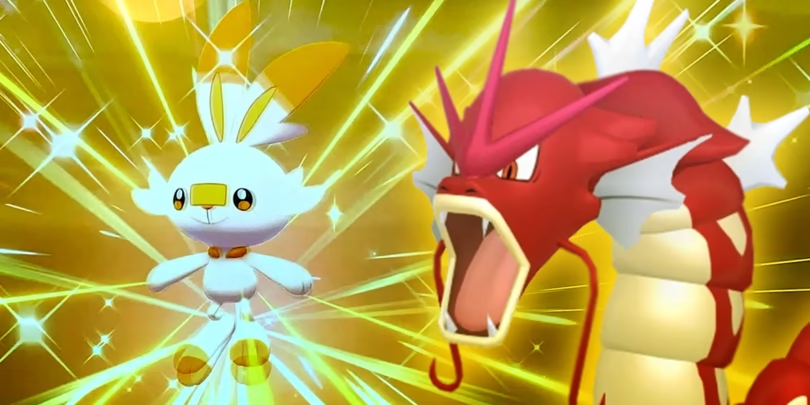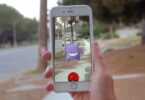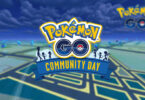How Niantic Keeps Pokémon Go Fresh After Nearly a Decade
When Pokémon Go first launched in July 2016, it became an instant global phenomenon. Crowds of people filled parks, streets, and landmarks in search of virtual creatures. Nearly a decade later, many assumed the game would fade away like other trends—but Niantic, the developer behind Pokémon Go, has kept it alive, thriving, and still relevant in 2025.
This article explores how Niantic continues to keep Pokémon Go fresh after so many years, highlighting innovations, events, community strategies, and the evolving ways it engages its players.
The Magic of Pokémon Go’s Core Concept
Before diving into the innovations, it’s worth understanding why Pokémon Go was so captivating in the first place:
-
Blending reality with gaming: It combined augmented reality (AR) with the beloved Pokémon universe.
-
Encouraging movement: Unlike traditional video games, Pokémon Go required physical activity, making it part exercise, part adventure.
-
Nostalgia & novelty: For long-time Pokémon fans, it was nostalgic, while for new players, it was a groundbreaking experience.
The challenge Niantic faced was simple but tough: How do you keep a game exciting when its main concept has already been experienced by millions?
Regularly Expanding the Pokémon Universe
One of the key strategies Niantic uses is the continuous addition of new Pokémon.
-
Generational rollouts: Pokémon from different generations of the franchise are gradually introduced. Instead of overwhelming players with all 1000+ Pokémon at once, Niantic releases them in waves.
-
Regional exclusives: Certain Pokémon only appear in specific parts of the world, making travel or trading with global players exciting.
-
Shiny variants: By adding rare, alternate-colored versions of Pokémon, Niantic keeps collectors motivated to hunt for more.
This slow drip of content ensures players always have something new to look forward to.
Seasonal Events: Creating a Living, Breathing Game
A major reason Pokémon Go still thrives is seasonal content. Every few months, Niantic introduces a new “season” with unique themes.
For example:
-
Summer Adventures: Events that encourage outdoor play, special spawns, and raid battles.
-
Halloween Haunts: Ghost-type Pokémon take over, and spooky decorations appear in-game.
-
Holiday Specials: Winter events often feature festive costumes, snowy effects, and cheerful bonuses.
These rotating events mirror the real world, keeping the game relevant and immersive.
Community Days: The Heart of Pokémon Go
Perhaps the most beloved innovation is Community Day.
-
Once a month, a specific Pokémon is featured with boosted spawn rates.
-
Players get special bonuses like increased XP, Stardust, or unique moves.
-
The event encourages players to gather outdoors, creating a sense of community.
Community Days are more than just about catching Pokémon—they’re about meeting fellow trainers, trading, battling, and sharing the experience. This social factor is crucial to Pokémon Go’s longevity.
Global Events and Collaborations
Niantic also keeps things fresh by introducing large-scale global events.
-
Pokémon Go Fest: A yearly celebration with rare spawns, legendary raids, and worldwide challenges.
-
Safari Zones: City-based events that bring unique Pokémon and activities to specific locations.
-
Collaborations: Partnerships with other brands, Pokémon movies, and even fashion labels bring unique in-game content.
These events not only excite long-term players but also attract returning and new players.
Keeping Gameplay Evolving
Beyond events and Pokémon additions, Niantic has focused on new gameplay mechanics over the years.
Raids and Legendary Pokémon
-
Introduced in 2017, raids brought cooperative gameplay where groups of players could battle powerful Pokémon.
-
Legendary Pokémon became raid bosses, making them highly desirable and creating hype whenever new ones were introduced.
PvP Battles
-
The GO Battle League allowed trainers to battle each other globally.
-
This shifted Pokémon Go from just a collecting game to a competitive platform.
Mega Evolutions and Special Forms
-
Adding Mega Evolutions gave players new strategies.
-
Costume Pokémon, such as Pikachu with hats, added lighthearted fun.
Each new feature brought depth and variety, preventing the game from becoming repetitive.
Technological Advancements in AR
Niantic has also pushed the envelope in augmented reality technology.
-
AR+ Mode: Pokémon interact more realistically with the environment.
-
Shared AR experiences: Multiple players can see the same Pokémon in AR.
-
Campfire App: A companion app that helps players connect, form groups, and plan raids.
By improving the tech side, Niantic keeps Pokémon Go modern and exciting compared to when it first launched.
Local & Global Community Building
One reason Pokémon Go hasn’t died out is because of its community-driven nature.
-
Local meetups: Players often form groups in their cities, coordinating raids and trades.
-
Online communities: Reddit, Discord, and Facebook groups thrive with players sharing strategies and tips.
-
Niantic initiatives: The company actively encourages community leaders through its ambassador programs.
By fostering a sense of belonging, Pokémon Go has gone beyond being just a game—it’s a social ecosystem.
The Role of Nostalgia
Nostalgia plays a huge role in Pokémon Go’s continued success.
-
Pokémon has been around since the 1990s, and every generation of players feels connected to it.
-
Niantic strategically releases Pokémon that spark emotional memories for fans.
-
Even special events like “Kanto Throwback” or “Johto Tour” tap into players’ childhood experiences.
By blending nostalgia with new mechanics, Niantic balances the old and the new.
Listening to Player Feedback
Over the years, Niantic hasn’t always made perfect decisions—such as changes in distance requirements during COVID-19 or unpopular event pricing. But what stands out is their willingness to adjust.
-
After player backlash, Niantic often tweaks or reverts changes.
-
Surveys, social media, and community leaders play a big role in shaping updates.
-
This responsiveness helps players feel valued and keeps trust alive.
Read More: How Niantic Keeps Pokémon Go Fresh After Nearly a Decade
Adapting to Global Challenges
During the COVID-19 pandemic, Pokémon Go faced its toughest test. A game built around outdoor exploration was suddenly limited by lockdowns.
Niantic adapted by:
-
Allowing players to raid remotely.
-
Increasing spawn rates near homes.
-
Extending incense and other bonuses.
These changes not only kept the game alive but also introduced permanent features that made it more accessible.
Balancing Free and Paid Content
Another reason for its longevity is how Niantic handles monetization.
-
Free-to-play friendly: Players can enjoy the game without spending money.
-
Optional microtransactions: Items like raid passes, storage upgrades, and event tickets enhance gameplay but aren’t mandatory.
-
Event tickets: Large events are often paid but provide enough value to satisfy players.
This balance ensures the game generates revenue without alienating casual players.
The Role of Exploration and Exercise
Pokémon Go has always stood out because it encourages real-world exploration.
-
Players discover new parks, landmarks, and walking routes.
-
It promotes exercise in a fun way, with walking rewards like eggs hatching.
-
Niantic’s mission has always been about getting people outdoors, and Pokémon Go perfectly aligns with that vision.
This unique blend of gaming and real-world benefits ensures it doesn’t feel like a “waste of time,” keeping parents, kids, and adults engaged.
Cultural Relevance and Longevity
Few mobile games stay relevant for nearly a decade, but Pokémon Go has managed to remain part of pop culture.
-
It has been featured in memes, TV shows, and even academic studies about gaming and exercise.
-
For many players, it’s not just a game—it’s a lifestyle or hobby.
-
New generations of players continue to join, making it multigenerational.
Challenges Niantic Still Faces
Of course, not everything is perfect. Pokémon Go has its challenges:
-
Event fatigue: Some players feel overwhelmed by too many events.
-
Pay-to-win perception: Competitive players sometimes see raid passes and items as necessary.
-
Player retention: Keeping older players engaged while attracting new ones is a balancing act.
Yet, despite these hurdles, the game remains incredibly strong.
The Future of Pokémon Go
Looking ahead, Niantic seems committed to keeping Pokémon Go alive for years to come. Possible future directions include:
-
More AR innovations like wearable integrations (smart glasses).
-
Expanded social features such as live group activities.
-
New Pokémon generations and mechanics that align with future Pokémon releases.
-
Sustainability initiatives that tie in with real-world conservation efforts.
If history is any indication, Niantic will continue adapting and innovating to meet changing player expectations.
Conclusion:
Pokémon Go’s journey is a remarkable case study in how a game can remain relevant for nearly a decade. Niantic has kept it fresh by:
-
Continuously adding new Pokémon and mechanics.
-
Hosting engaging seasonal and global events.
-
Building strong local and global communities.
-
Leveraging nostalgia while embracing new technology.
-
Listening to player feedback and adapting to challenges.
Ultimately, Pokémon Go isn’t just a game—it’s a global social experience that blends technology, nostalgia, exercise, and community. That’s why, nearly a decade later, millions still pick up their phones and head outside to catch ’em all.







